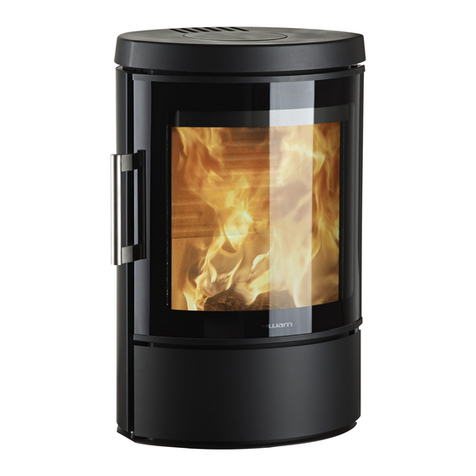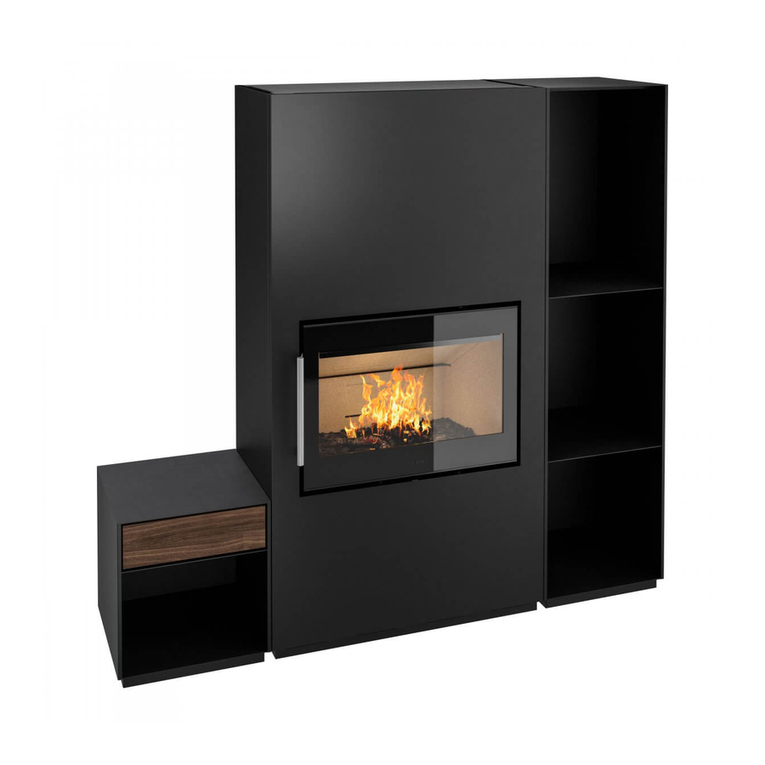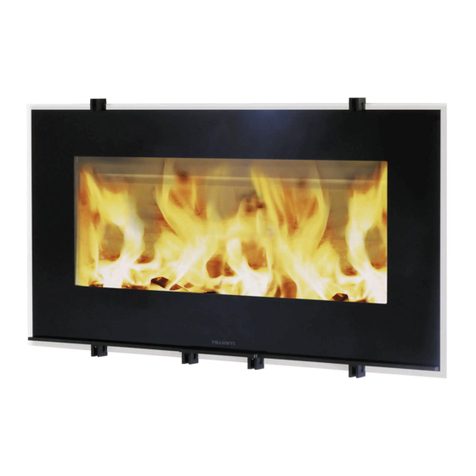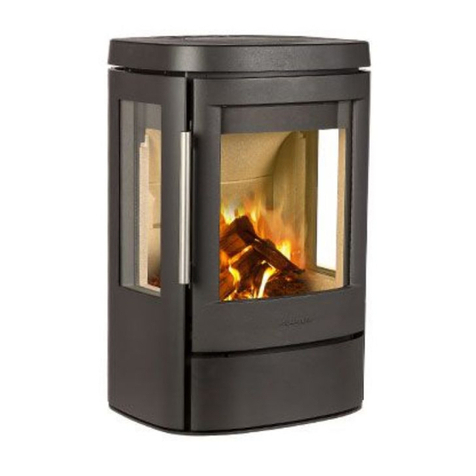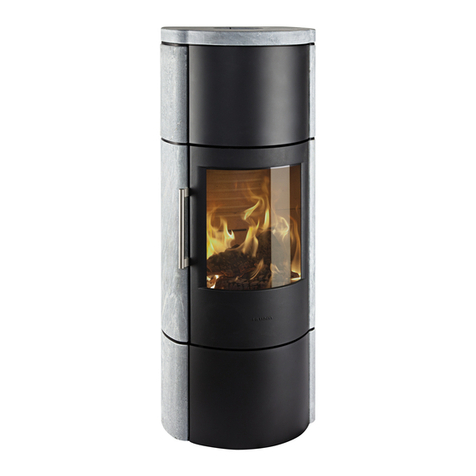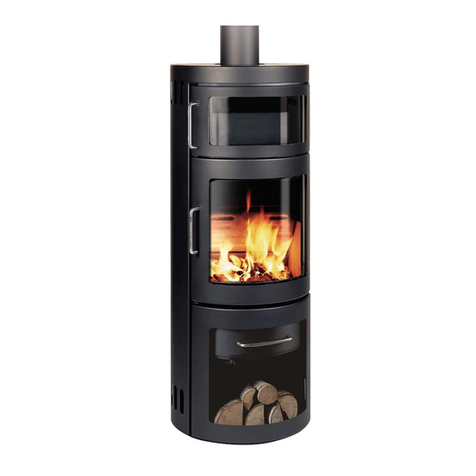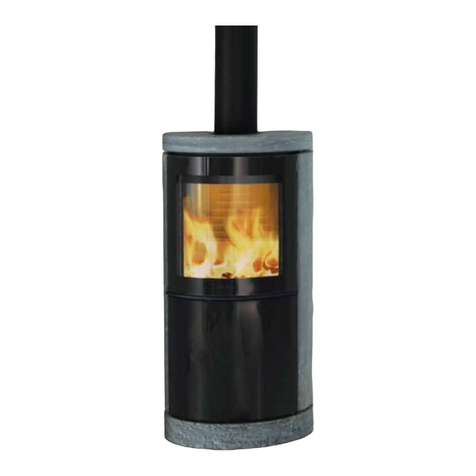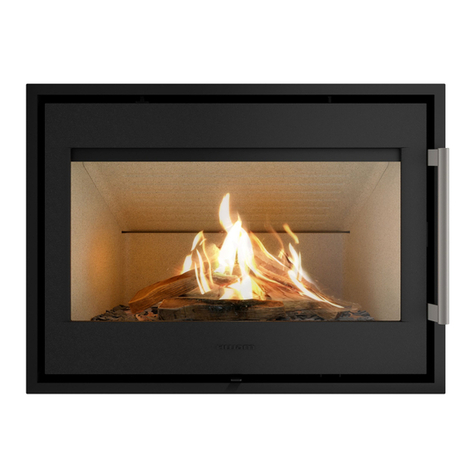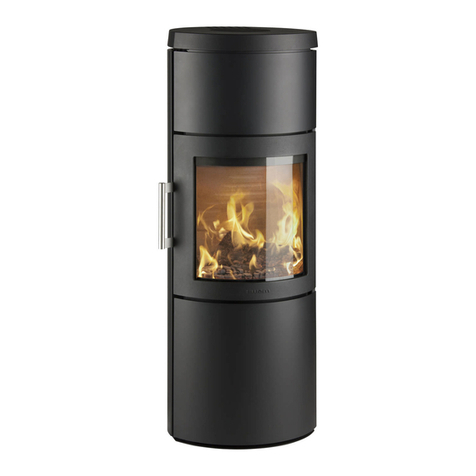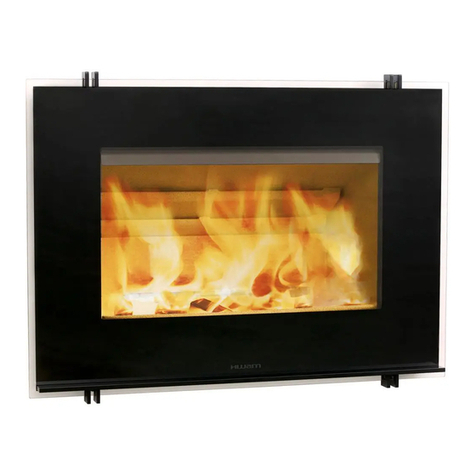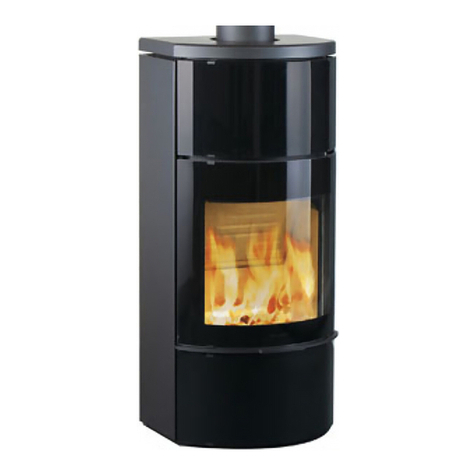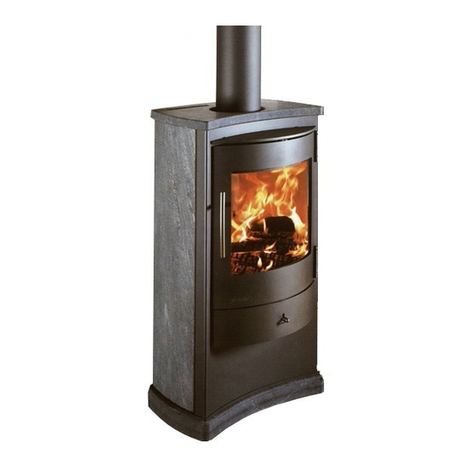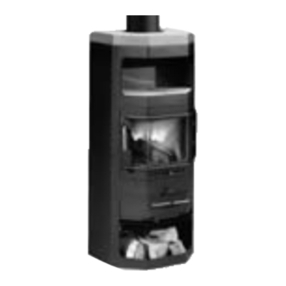7
Isolering Høyde
Murt skorstein Kjerneisolert med Isokern eller
lignende
4–7 m over ovnens røykstuss
Stålskorstein Min. 50 mm mineralull minst fra 1 m
over ovnens røykstuss
Min. 3,5 m over ovnens røykstuss,
herav min. 3 m isolert.
Reguleringsspjeld
Det anbefales å utstyre skorsteinen eller røykrøret med et reguleringsspjeld, slik at skorsteins-
trekken kan reguleres på dager med kraftig vind.Reguleringsspjeldet må ikke kunne lukke røykrøret
helt. Det skal alltid være et fritt gjennomstrømningsareal i skorstenen på minst 20 cm2.
Plassering av løse deler
Før peisovnen tas i bruk, skal du kontrollere at alle løse deler er på plass, se tegning B.
1. Røykhyllen skal ligge på bakplaten og på de skrå sideplatene.
2. Dekkplaten skal ligge oppå de små klossene som bakhyllen hviler på. Dekkplaten skal
trekkes helt frem mot den skrå platen med sekundærluftåpningen.
Tilslutning til skorstein (tegning D)
HWAM Elements leveres med topputtak. Den kan monteres med en godkjent stålskorstein eller
tilsluttes en skorstein i mur.
1. Stålskorstein
2. HWAM fullformrør, passer innvendig i peisovnens røykrørstuss
3. Murt skorsteinsvange
4. Innmurt bøssing, passer til fullformrør
5. Veggrosett, skjuler åpningen ved murbøssingen
6. Fuge, tettes med pakningssnor
7. Reguleringsspjeld i fullformrør
8. Feieluke
Skorsteinen
Skorsteinen er fyringspeisovnens motor og helt avgjørende for peisovnens funksjon. Skorsteins-
trekken gir et undertrykk i fyringsovnen. Dette undertrykket fjerner røyken fra peisovnen, suger
luft gjennom spjeldet til ruteskyllingen, som holder glasset fritt for sot, og suger luft inn gjennom
det primære og sekundære spjeldet til forbrenningen.
Skorsteinstrekken dannes på grunn av temperaturforskjellen inne i og utenfor skorsteinen. Jo
høyere temperatur det er i skorsteinen, desto bedre blir skorsteinstrekken. Det er derfor avgjø-
rende at skorsteinen blir varmet godt opp før du lukker spjeldene og begrenser forbrenningen
i peisovnen (en murskorstein bruker lengre tid på å bli gjennomvarm enn en stålskorstein). På
dager der det på grunn av vær- og vindforhold er dårlig trekk i skorsteinen, er det ekstra viktig å
få varmet opp skorsteinen så raskt som mulig. Det gjelder å få flammer så raskt som mulig.
Når peisovnen ikke har vært i bruk på lang tid, er det viktig å kontrollere skorsteinsrøret for
blokkeringer.
Det er mulig å koble flere enheter til samme skorstein. Undersøk gjeldende forskrifter på forhånd.
Selv en skorstein med godt trekk kan fungere dårlig hvis den brukes feil. Tilsvarende kan en
skorstein med dårlig trekk fungere bra hvis den brukes riktig.






